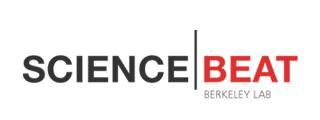

| March 24, 2004 | science beat | | lab a-z index | lab home |
 |
 |
||
|
|||
| Synthetic Biology Offers New Hope For Malaria Victims | ||||||||||||||||||||||||||||||||||||||||
| Contact: Lynn Yarris, lcyarris@lbl.gov | ||||||||||||||||||||||||||||||||||||||||
In a preview of things to come from the fledgling scientific field of "synthetic biology," researchers with Lawrence Berkeley National Laboratory's Physical Biosciences Division (PBD) and the University of California at Berkeley's Chemical Engineering Department are developing a simple and much less expensive means of making one of the most promising and potent of all the new antimalarial drugs. By adding new genes and engineering a new metabolic pathway in Escherichia coli bacteria, the researchers can quickly and cheaply synthesize a precursor to the chemical compound artemisinin. This next-generation antimalarial drug has proven to be effective against strains of the malaria parasite that are resistant to current front-line drugs, but it is far too expensive right now for the countries in Africa and South America where it is needed most. "By inserting genes from three separate organisms into the E. coli, we're creating a bacterial strain that can produce the artemisinin precursor, amorphadiene," says chemical engineering professor Jay Keasling, who is leading the research. "We are now attempting to clone the remaining genes needed for the E. coli to produce artemisinin." Keasling heads PBD's new Synthetic Biology Department, the world's first such department in a major scientific research institute. Formed by PBD director Graham Fleming in July, 2003, the idea behind the Synthetic Biology Department is to design and construct novel organisms and biologically-inspired systems that can solve problems natural biological systems cannot, and also provide new information about living cells.
"In our research, we're mixing different genes from different organisms in order to do new chemistry inside living cells," Keasling says. "The goal is to enable us to produce new drugs for fighting disease or combating bioterror agents, or to produce existing drugs in better ways. That is the essence of synthetic biology and the new department we've created at Berkeley Lab: to harness the power of biology to solve problems that cannot be solved in any other way." In the medical arena, few problems have been more persistent than malaria, which was first described toward the end of the fifth century BCE by Hippocrates. According to the World Health Organization, each year nearly 500 million people living in the tropics and subtropics become infected with malaria, suffering burning fever and severe pain. Nearly three million—mostly children—die. Although medical researchers have been unable to stamp out this scourge, effective antimalarial drugs have been discovered. The best of these is artemisinin, a natural product extracted from the dry leaves of Artemisia annua, the sweet wormwood tree. Although this tree can grow in many places, it only produces artemisinin under specific agricultural and climatological conditions. China is one of the areas where artemisinin is produced, and the Chinese have been using it in the herbal medicine ginghaosu for more than 2,000 years.
In recent studies, artemisinin demonstrated a nearly 100-percent success rate for the treatment of all known strains of malaria. It destroys the malaria parasite by releasing high doses of oxygen-based free radicals that attack the parasite inside iron-rich red blood cells. More than a million malaria patients have already been cured by artemisinin, but the cost of extracting the drug from sweet wormwood trees or manufacturing it through chemical synthesis is so high that the impoverished populations suffering the most cannot afford it. Furthermore, says Keasling, "Classical plant breeding and selection
combined with improved agricultural practices may not be adequate to lower
the cost of artemisinin production to an affordable price." "The ability to produce amorphadiene in a simple organism like E. coli opens up a whole realm of possible molecular backbones that can later be functionalized to make drugs," says Keasling. "With this ability, we can also easily encourage the bacteria to produce molecules not found in nature that could be even more effective for treating human diseases." Artemisinin is a terpenoid, a class of the huge isoprenoid family whose members are used in a wide variety of applications including anticancer drugs such as taxol as well as antimalarial drugs, plus an assortment of flavor and fragrance additives. Because terpenoids are naturally produced only in small quantities in plants, microbes, and marine organisms, there's a great interest in mass-producing them via an E. coli bacterial host. The technique used by Keasling and his colleagues should be applicable to all members of the isoprenoid family and represents "the first essential step toward the production of a broad range of terpene-based compounds in microorganisms."
In addition, Keasling and his colleagues are investigating the production of other isoprenoids in E. coli, including the promising anticancer drug Eleutherobin, which must currently be extracted from a rare form of marine coral, and the anti-HIV drug, Prostratin, which is showing promise in clinical trials on AIDS patients. "We've taken the engineering of a microbe about as far as anyone has at this point, but it's only the start," Keasling says. "There are many more beneficial things that can be done with E. coli and other microbes." As is the case with most genetically-engineered E. coli, the microbes being developed by Keasling and his colleagues cannot survive in the environment. A first report on this research appeared in Nature Biotechnology in July 2003. Coauthoring that paper with Keasling were Vincent Martin and Douglas Pitera, plus Sydnor Withers and Jack Newman. Martin holds a joint appointment with Berkeley Lab and UC Berkeley. The other three authors are with UCB's Department of Chemical Engineering. Additional information
|
||||||||||||||||||||||||||||||||||||||||
| Top | ||||||||||||||||||||||||||||||||||||||||